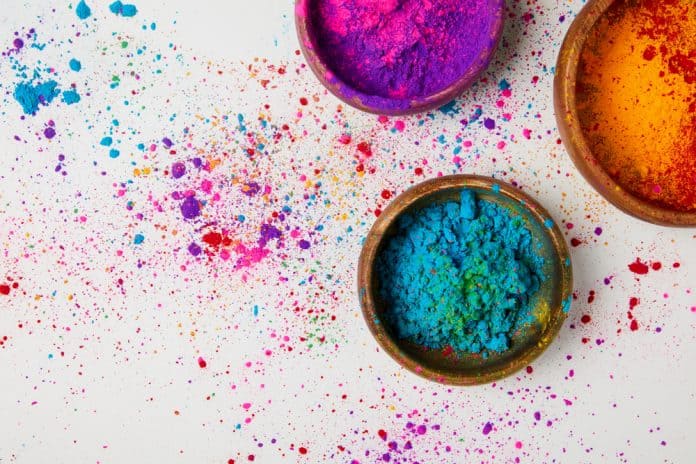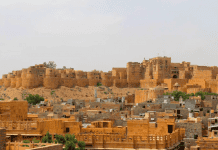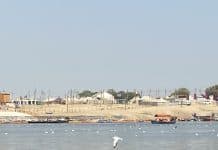“Holi Hai!” The sound of that instantly conjures a visual of a cloudburst of colours for anyone who has ever seen what Holi is. In a brilliantly plural country like India, every festival has its own unique tradition in different parts of the country and Holi is no different.
Holi is celebrated on the full-moon day of the Phalgun, the12th month of the Indian Lunar calendar. It is the celebration of Narasimha, the 4th avatar of Vishnu who defeated the pride of Hiranyakashyapa. It is also a celebration of the advent of Spring after the enduring winter. Holi is, thus, celebrated with much gusto and colour that denotes not just the good over the evil but also of the flora and fauna that come alive with the season of Spring.
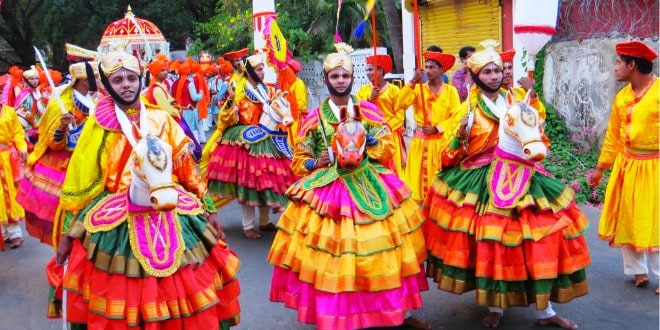
We bring to you five places in India you go to for Holi and celebrate with friends and family:
(1) Shigmo in Goa
A number of Konkan communities in Goa come together to celebrate Shigmo in the Phalguna month in various parts of Goa with a vibrant display of traditional song and dance. Vhaldo (big) Shigmo is a six-day celebration starting on the day of Holi to celebrate the homecoming of the warriors who departed from their home after Dussera to fight and ward off invaders. The celebration of this festival is a relatively recent tradition that commenced in areas that were under the Portugal rule in Goa.
Dhakto (small) Shigmo is a five-day celebration leading up to the day of Holi. Dhakto Shigmo is most prominently celebrated by the rural communities comprising farmers and other related livelihoods that are dependent on Mother Nature for their life and work.
During the entire festival period, the locals abstain from consuming alcohol or eating non-vegetarian food. The fifth day of the festival, or Rang Panchami, is the day of rejoicing and playing with red and blue gulal (colour).
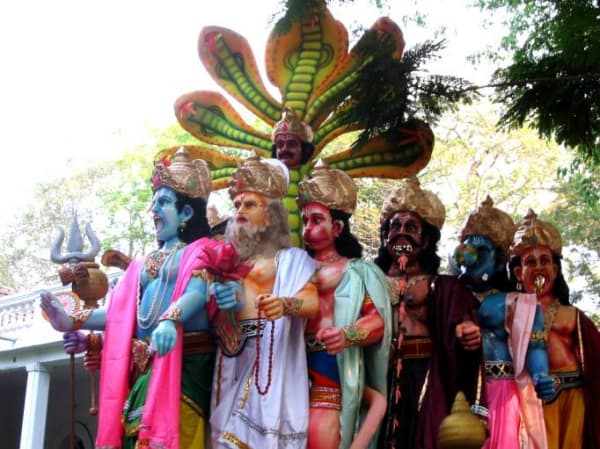
When and where: You can witness the festival in Panjim. Based on whether you would like to experience Dhakto or Vhaldo Shigmo, you can plan to be there a few days before or after Holi. The festival is held for a period of 14 days from the 9th moon day to the full-moon day – so if you are planning to be in Goa, you can plan accordingly.
How to get there: Panjim is well connected by flights from across the country. You can also opt to travel by train or road if you are travelling from the neighbouring states.
(2) Yawol Shang in Manipur
Considered the most important festival in Manipur, Yawol Shang is a six-day celebration starting on the day of Holi and celebrated as a tribute to the Manipur God Pakhangba. It has been celebrated by Hindus and the indigenous communities in Manipur for close to three centuries now, which is the age of Vaishnavism (the belief that Vishnu is the Supreme Power) in the region.
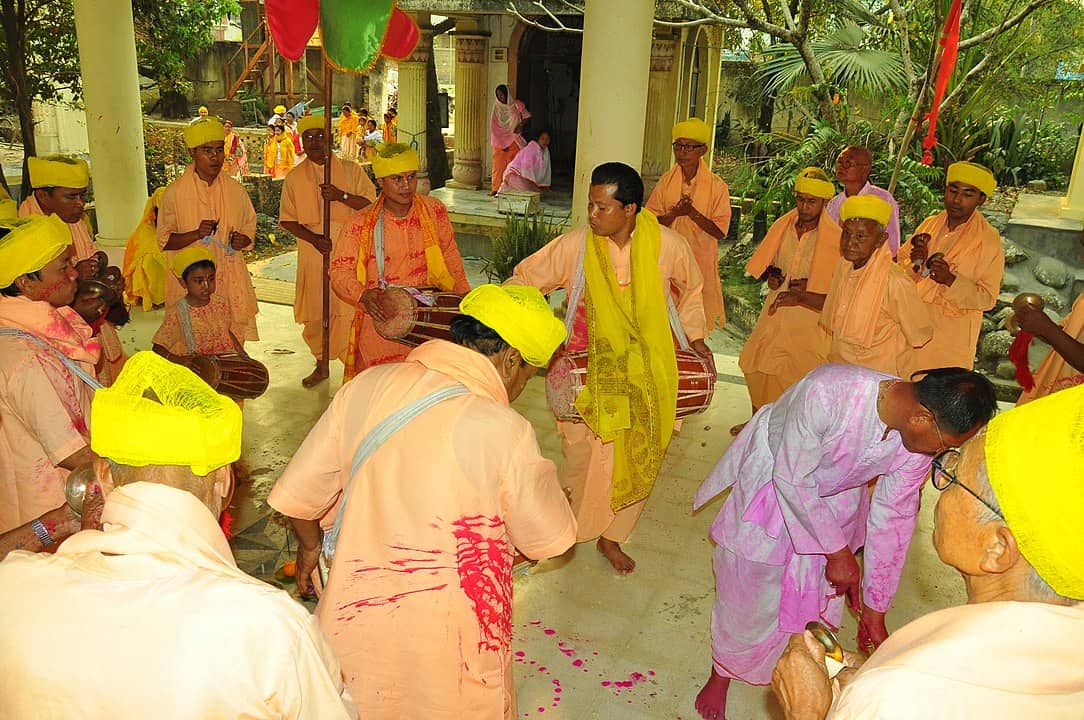
Traditionally, the festival was celebrated under the moonlight with folk songs sung to the beat of the indigenous drum and with folk dance. After the burning of Holika the previous night, devotees play gulal and dance in front of the temple of Krisna dressed in the traditional white and yellow turbans and sing devotional songs. On the final day of the festivities, communities come together to take out a procession towards the Krishna temple (Shri Shri Govindji Temple) in Imphal with great pomp.
Holi is also celebrated with great pomp in the precincts of Shri Shri Govindaji Temple by playing the Ras Lila, a dance form of Manipur, during what they call Halangkar or Holi.
When and where: You can plan your visit to witness the celebrations at Imphal on any of the six days leading up to Holi.
How to get there: You can take a direct flight to Imphal from most cities in the country. Based on your travel plan for the north-east, you can also fly into Guwahati and reach Imphal by road (buses are available too) or train.
(3) Dol Jatra in Shantiniketan
In some traditions, the festival Holi is more prominently a celebration of Radha and Krishna. In Shantiniketan, the school and higher educational institutions established by Gurudev Rabindranath Tagore, Holi is celebrated at Dol Jatra.
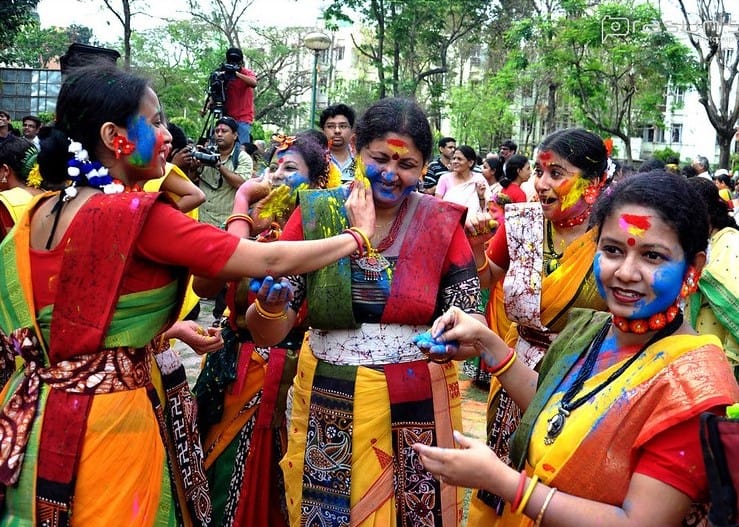
The idols of Krishna and Radha are placed on swings and devotees take turns to swing them. Women dance around the swing and sing devotional songs and Rabindra sangeet, as men spray coloured water and powder called “Abeer”. Such festivities are observed in Assam and Orissa as well.
When and where: Shantiniketan in the town of Bolpur.
How to get there: Bolpur has a railway station and is connected by rail to the major cities and towns close by including Kolkata, Durgapur and Guwahati. The closest airport is the one at Kolkata (2-3 hour drive away) which has flights coming in from across the country. Bolpur is also connected by road to the cities and towns around.
(4) Vrindavan, Barsana, and Mathura
One place in India that is synonymous with ‘immense Holi fun’ is that of Mathura and Vrindavan – where Holi celebrations are almost a month-long, all through February culminating into the grand celebrations of the festival of colours in March.
People from all over the world visit Barsana and Mathura at this time of the year to experience this month-long spectacle and the famous Lathmaar Holi.
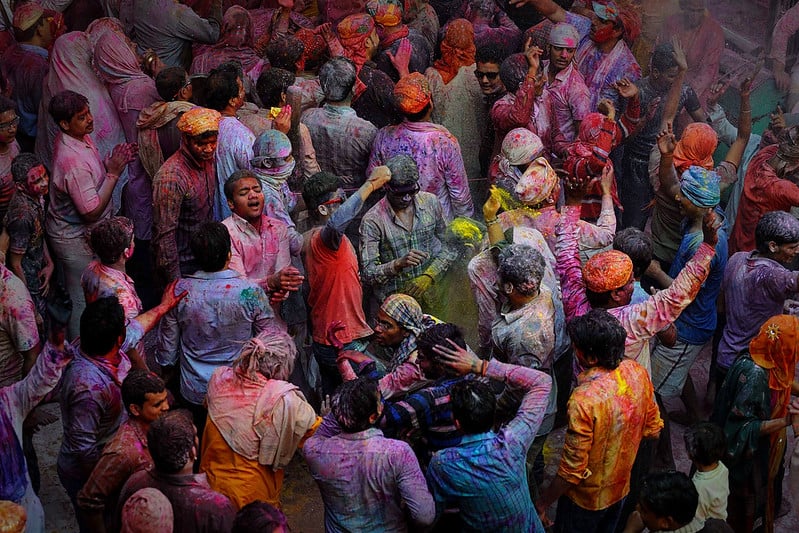
In Vrindavan, Holi festival is played with flowers at the ancient and famous Banke Bihari temple on the Ekadashi day before Holi – when priests of the temple throw flowers on devotees, who throng in large numbers to experience this divine festivity.
Widowhood in India is most parts of India is a difficult experience as one has to deal with a number of complex traditions besides the loss of a partner. Draped in white sarees as a symbol of their widowhood, the women lead a life devoid of colour and ornaments. Vrindavan’s Pagal Baba Widow Ashram has housed abandoned and exiled widows for over a century.
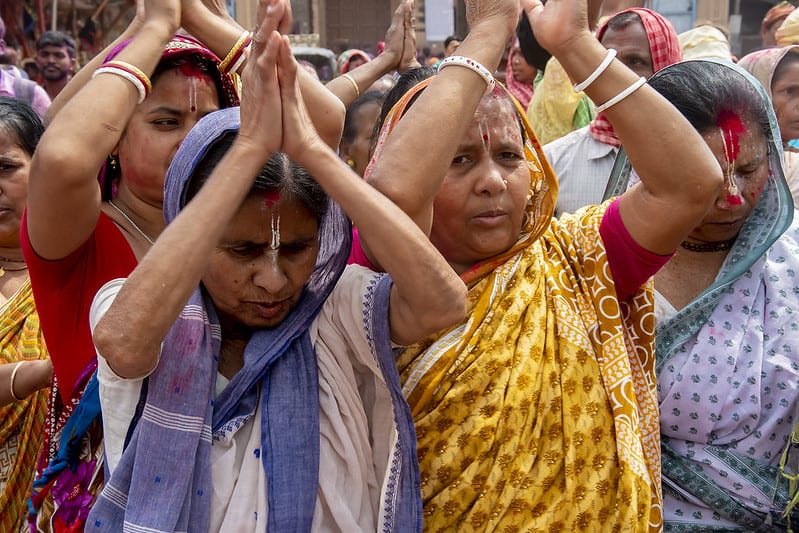
In recent times, a social organization has initiated the festivities of Holi to bring back colour and joy to the inmates of the ashram as a way of remembering and celebrating the play, mischief and the joy that Lord Krishna represents. Planned as a four-day-long celebration, the festival of Holi allows the widows to play with colour and greet each other with and themselves as the spirit of Krishna.
However, due to the coronavirus outbreak, this year, many aged widows, who are highly susceptible to the virus, will not be playing Holi at the ashram.
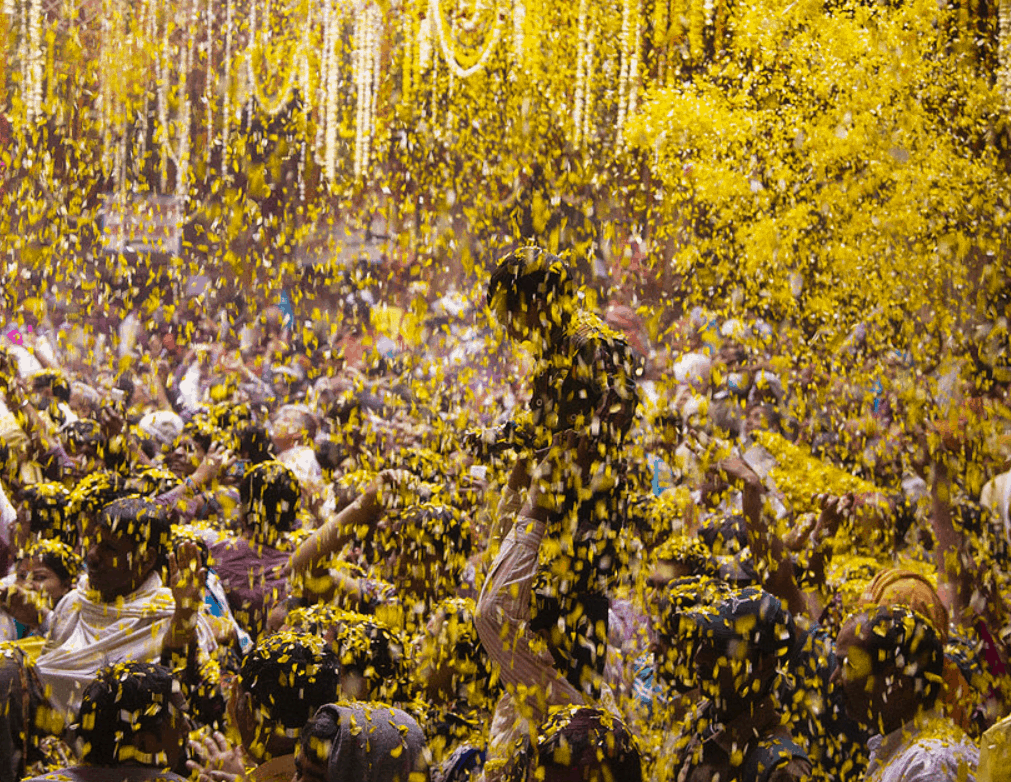
When and where: The ideal time to visit the Pagal Baba Ashram for the celebration of Holi is the day of Holi and the day or two before Holi. The ideal time to visit Mathura and Barsana to catch the festivities is February onwards until the day of Holi when Dwarkadheesh temple in Mathura is decorated and resplendent. The Lathmaar Holi begins seven days before Holi – around the 3rd of March this year.
To catch the flower Holi at Vrindavan’s Banke Bihari, you could plan a trip on the Ekadashi before Holi.
How to get there: The Delhi Airport is the closest international airport to Mathura, at a distance of 147 km while the closest domestic airport is Kheria Airport, Agra, located at a distance of 49 km. From Delhi or Agra, you could get to Mathura and Vrindavan in as less as an hour-and-a-half drive.
(5) City Palace, Udaipur
Mewar Holika Dahan is the symbolic Holi pyre that takes place on the grounds of City Palace on the eve of Holi. The presiding King of Mewar and the royal family grace the occasion. Following the lighting of the Holi pyre by the king, while the locals perform ‘Gair’ – a folk dance – around the bonfire. Royal guests, VIPs, and dignitaries are invited for the celebration by the royal Mewar family.
An added dimension in the Holi experience at Udaipur is the herbal gulal made from handpicked flowers by the tribal women from the neighbouring tribal areas such as Kodiyat, Thamla Ber Devla of Kotda region Dang, Chukdia of Udaipur, Malviya-Mirpur and Jorma of Gogunda.
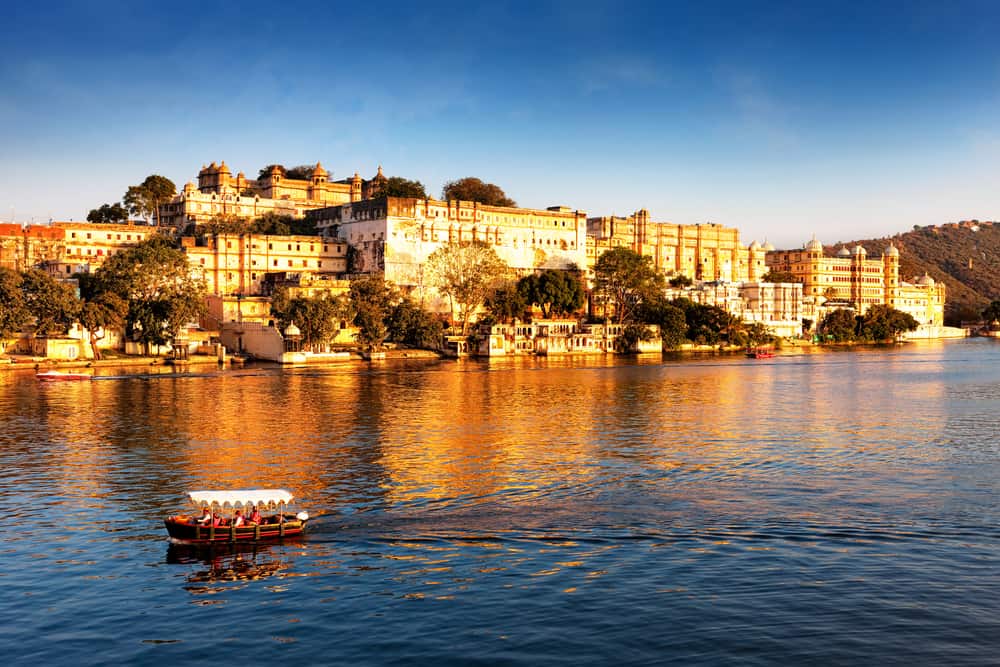
When and where: The City Palace in Udaipur is accessible from anywhere in the city. To attend the festivities, one is required to purchase a special pass as a tourist.
How to get there: Udaipur is well connected by rail and road with all cities and towns in the state of Rajasthan and its neighbouring states. Udaipur has a well connected domestic airport which is around 22km away from the heart of the city where the City Palace is situated. The Jaipur airport is the closest international airport, which is approximately a seven-hour drive from Udaipur.
This article has been put together with valuable contributions from the blogging team.


